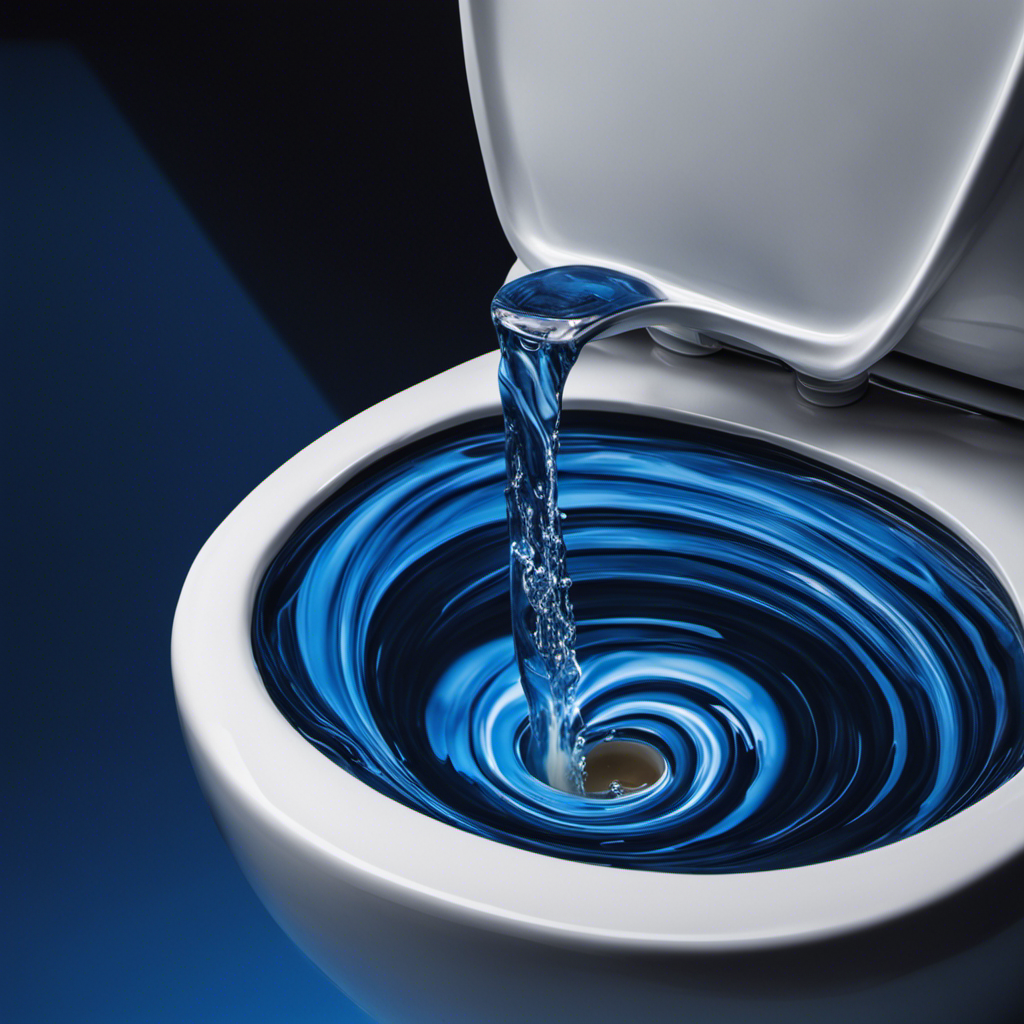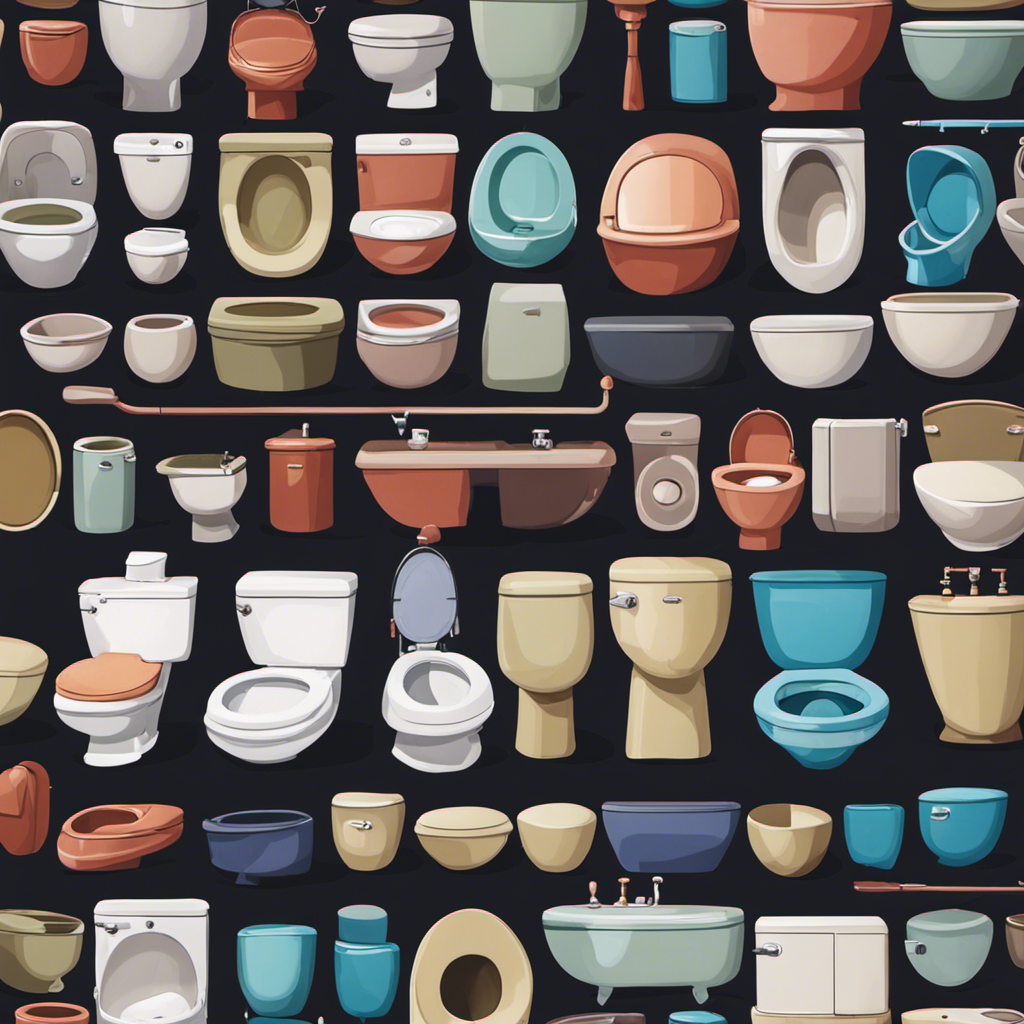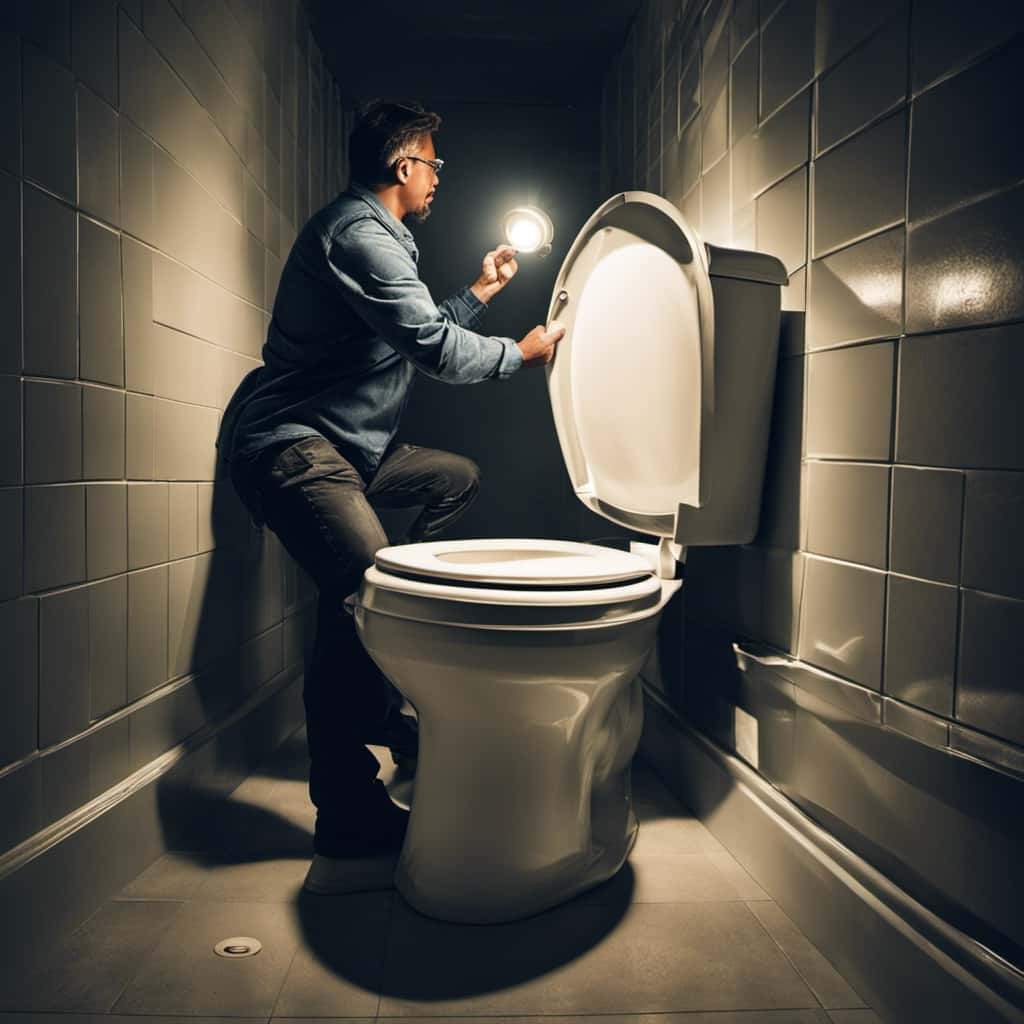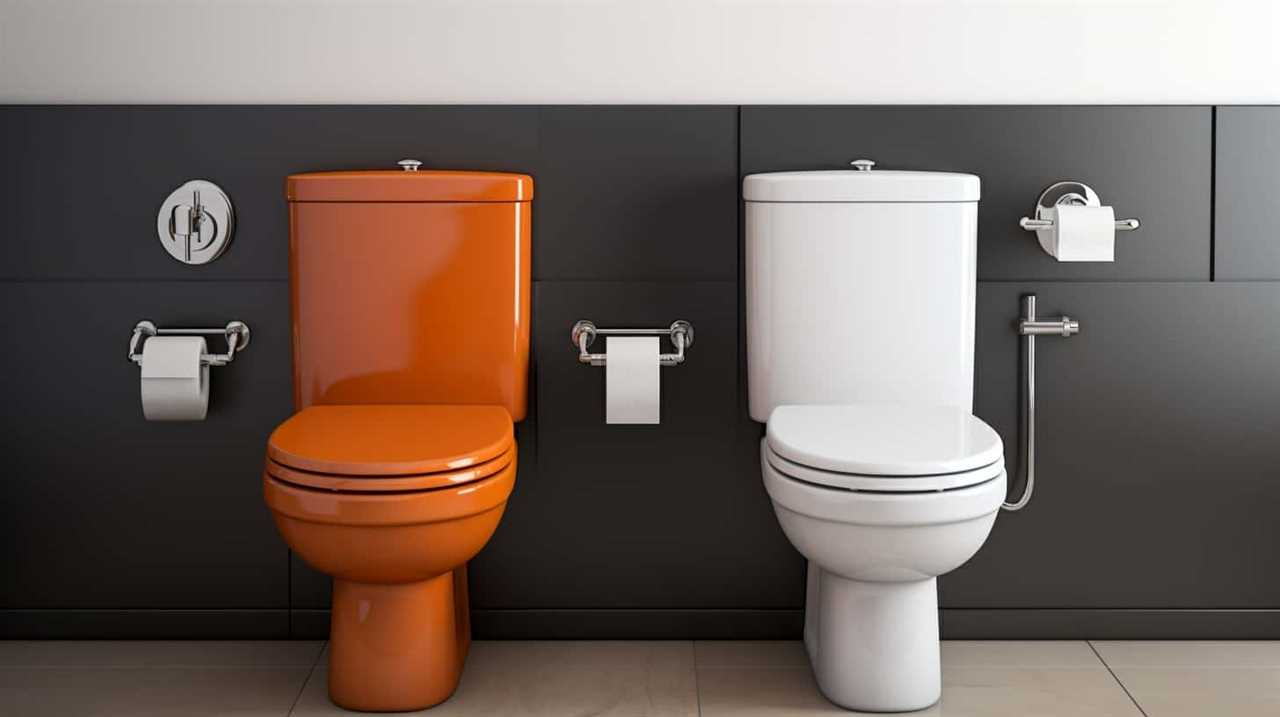Did you know that a running toilet can waste up to 200 gallons of water per day?
As someone who is concerned about conserving water and reducing my utility bills, I wanted to understand the impact of a running toilet on water usage.
In this article, I will delve into the mechanics of a running toilet, explore the average water consumption, and provide tips for identifying and fixing common causes.
By the end, you will be equipped with the knowledge to save water and prevent a running toilet.
Key Takeaways
- A running toilet can waste up to 200 gallons of water per day, equivalent to flushing the toilet over 20 times.
- This can lead to higher water bills and negative environmental impact, putting strain on water resources and contributing to water scarcity.
- The mechanics of a running toilet involve components such as the fill valve, flapper, flush valve, float, and float arm, which can malfunction and cause continuous water leakage or overflowing.
- To prevent water waste and costly repairs, it is important to promptly identify and fix common causes of a running toilet, such as faulty flappers, flush valves, or fill valves, and ensure the correct water level in the tank.
The Impact of a Running Toilet on Water Usage
A running toilet can use a significant amount of water every day. Ignoring this issue can have serious consequences.
Not only will it result in higher water bills, but it also has a negative environmental impact. On average, a running toilet can waste up to 200 gallons of water per day, which is equivalent to flushing the toilet over 20 times.
This excessive water usage puts a strain on our water resources and contributes to water scarcity. Additionally, the energy required to treat and distribute this wasted water further adds to the environmental impact.
Understanding the mechanics of a running toilet is crucial in order to address this issue and conserve water effectively.
Understanding the Mechanics of a Running Toilet
To understand how your toilet keeps running, you should familiarize yourself with its mechanical components. Here are the main parts you should know:
-
Fill valve: This valve controls the flow of water into the toilet tank. If it malfunctions, it can cause the tank to constantly refill.
-
Flapper: The flapper is located at the bottom of the tank and seals the flush valve. If it is worn out or damaged, it can cause water to continuously leak into the bowl.
-
Flush valve: This valve is responsible for releasing water from the tank into the bowl during a flush. If it doesn’t close properly, it can lead to a constantly running toilet.
-
Float and float arm: The float and float arm work together to regulate the water level in the tank. If the float is stuck or the arm is misaligned, it can result in an overflowing toilet.
By understanding these common toilet problems and troubleshooting a running toilet, you can save water and prevent unnecessary water waste.
Now, let’s take a look at the average water consumption of a running toilet.
Average Water Consumption of a Running Toilet
Understanding the average amount of water your constantly refilling toilet consumes is crucial in identifying and addressing the issue of water waste and the need for toilet repair.
On average, a running toilet can waste anywhere from 1 to 3 gallons of water per minute. This means that in just one hour, your toilet could be wasting up to 180 gallons of water. Over the course of a day, that number increases to a staggering 4,320 gallons.
Not only is this a significant waste of a precious resource, but it can also lead to higher water bills and unnecessary strain on the environment. By monitoring your toilet’s water consumption and promptly fixing any issues, you can help conserve water and reduce the need for costly repairs in the future.
Identifying and Fixing Common Causes of a Running Toilet
Identifying and fixing common causes of a running toilet can help prevent water waste and avoid costly repairs. When troubleshooting a running toilet, here are four common problems to consider:
-
Faulty flapper: The flapper is a rubber seal that controls the flow of water from the tank to the bowl. If it’s worn or damaged, it can cause water to continuously leak into the bowl.
-
Loose or damaged flush valve: The flush valve is responsible for releasing water from the tank into the bowl during a flush. If it’s loose or damaged, water may constantly run into the bowl.
-
Faulty fill valve: The fill valve is responsible for refilling the tank after a flush. If it’s not functioning properly, it may constantly release water, leading to a running toilet.
-
Incorrect water level: The water level in the tank should be properly adjusted to ensure it stops filling at the correct level. If it’s set too high, it can cause the toilet to continuously run.
Tips for Saving Water and Preventing a Running Toilet
By implementing these simple tips, you can easily conserve water and prevent a toilet from running. Water conservation techniques are essential for both the environment and your wallet.
Firstly, check for any leaks by placing a few drops of food coloring in the toilet tank. If the colored water seeps into the bowl, you have a leak that needs fixing.
Next, adjust the water level in the tank to prevent overflow. This can be done by adjusting the float valve or the fill valve.
Additionally, consider installing a dual-flush mechanism to control the amount of water used for flushing.
Lastly, make sure to fix any leaky or malfunctioning toilet parts promptly. DIY toilet repairs can save you money and help conserve water.
Frequently Asked Questions
What Are the Signs That Indicate a Toilet Is Running?
Toilet maintenance is crucial for water conservation. Signs of a running toilet include a constant sound of water, water trickling into the bowl, and the toilet not flushing properly.
Can a Running Toilet Cause Damage to the Plumbing System?
A running toilet can cause significant damage to the plumbing system if left unchecked. The potential costs of repairs can add up quickly. Common causes include a faulty flapper valve or a malfunctioning fill valve.
Are There Any Health Risks Associated With a Running Toilet?
There are health risks associated with a running toilet, but they can be prevented. It is important to address the issue promptly to avoid water damage, mold growth, and potential contamination of the water supply.
How Long Does It Typically Take to Fix a Running Toilet?
On average, it takes about 30 minutes to fix a running toilet. Common issues include a faulty flapper, fill valve, or flush valve. Identifying the problem and replacing the faulty parts can restore proper function.
Is It Recommended to Hire a Professional Plumber to Fix a Running Toilet, or Can It Be Done as a DIY Project?
Hiring a professional plumber for a running toilet can be cost effective. However, a DIY fix can be more affordable if you have some plumbing knowledge and experience. It is possible to fix a running toilet without professional help.
Conclusion
In conclusion, a running toilet can result in significant water wastage. On average, it consumes around 200 gallons of water per day. This not only has a negative impact on the environment but also leads to higher water bills.
By understanding the mechanics of a running toilet and addressing any issues promptly, you can prevent excessive water usage. Implementing simple tips like checking for leaks and using a dual flush system can help conserve water and avoid the inconvenience of a running toilet.
So, take action today and save water, one flush at a time!










